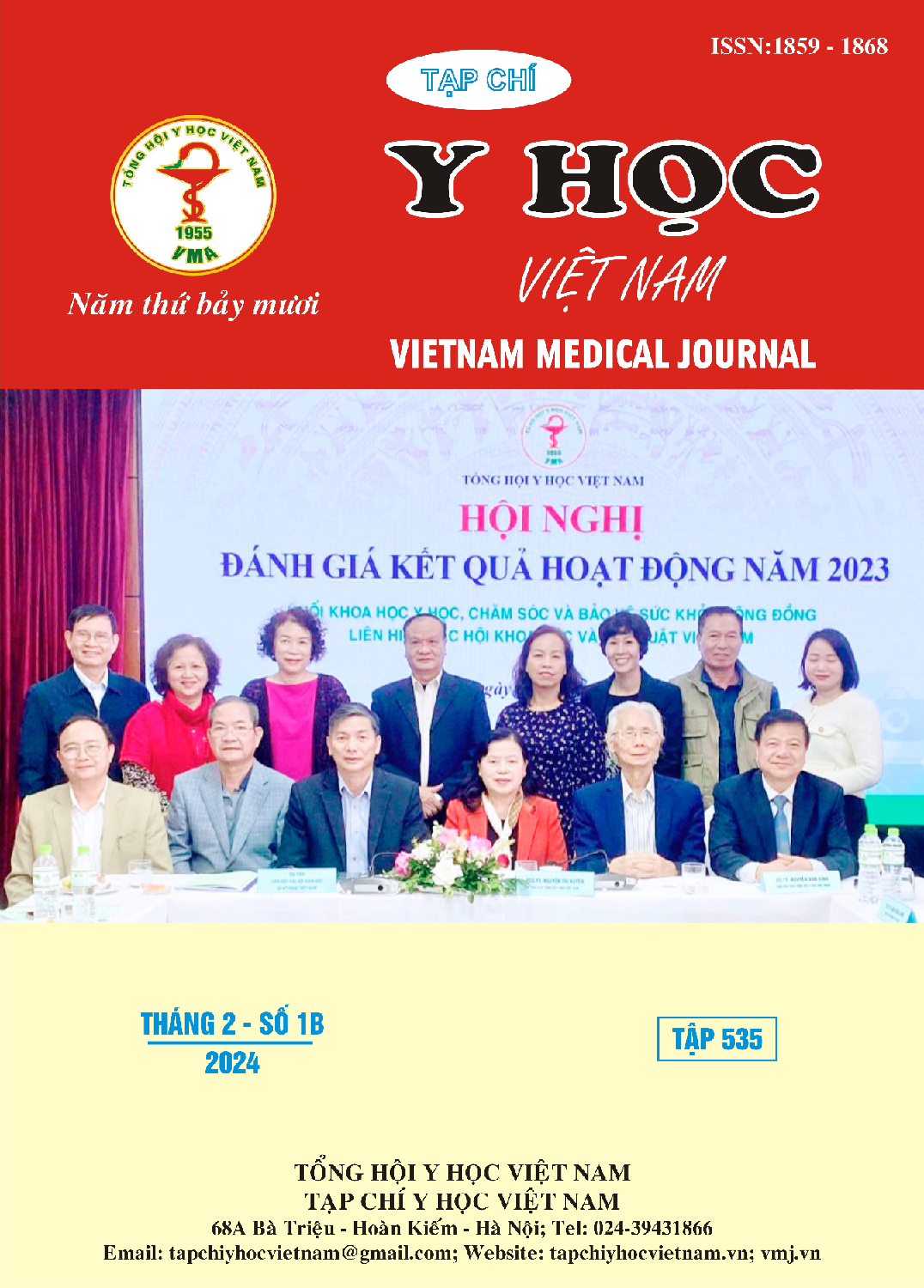SHORT-TERM OUTCOME OF MINIMALLY INVASIVE ESOPHAGECTOMY FOR ESOPHAGEAL SQUAMOUS CELL CARCINOMA PREOPERATIVE CHEMORADIOTHERAPY AT K HOSPITAL
Main Article Content
Abstract
Abtract: Esophageal cancer is a poor prognosis disease. Preoperative chemoradiotherapy followed by surgery has been shown to reduce recurrence rate, increase overall survival, increase chance of R0 resection rate. Methodology: A prospective descriptive study was performed on a group of middle-lower third esophageal cancer who underwent preoperative chemoradiotherapy and follow by thoraco-laparoscopic esophagectomy with lymph node dissection from September 2022 to May 2023 at Department of Abdominal Surgery I – National Cancer Hospital. Result: With the sample size is 20 patients, we recognized the intraoperative complications were pleural tear (40%) and the main postoperative complication were pneumonia (25%), recurrent laryngeal nerve injury (10%). 45% of the patients have no residual viable primitive tumour at pathological examination and the average number of retrieved lymph node was 33,5 ± 15,2 per-patient. Conclusion: This prospective study demonstrates that thoraco-laparoscopic esophagectomy and lymph node dissection follow preoperative chemoradiotherapy is feasible and safe with with an acceptable rate of postoperative complications.
Article Details
Keywords
Esophageal cancer, neo-adjuvant treatment, preoperative chemoradiotherapy
References
2. Ajani JA, D’Amico TA, Bentrem DJ, et al. Esophageal and Esophagogastric Junction Cancers, Version 2.2023, NCCN Clinical Practice Guidelines in Oncology. J Natl Compr Canc Netw. 2023;21(4): 393-422. doi:10.6004/ jnccn. 2023.0019
3. Japanese Classification of Esophageal Cancer, 11th Edition: part II and III. Esophagus. 2017;14(1):37-65. doi:10.1007/ s10388-016-0556-2
4. Obermannová R, Alsina M, Cervantes A, et al. Oesophageal cancer: ESMO Clinical Practice Guideline for diagnosis, treatment and follow-up. Ann Oncol. 2022;33(10): 992-1004. doi:10.1016/ j.annonc.2022.07.003
5. Ashok A, Niyogi D, Ranganathan P, et al. The enhanced recovery after surgery (ERAS) protocol to promote recovery following esophageal cancer resection. Surg Today. 2020;50(4):323-334. doi:10.1007/s00595-020-01956-1
6. Fang HC, Farah MH, Shiue SJ, et al. Percutaneous endoscopic gastrostomy prior to esophagectomy for esophageal cancer - a systematic review and meta-analysis. Expert Rev Gastroenterol Hepatol. 2022;16(2):155-162. doi:10.1080/17474124.2022.2027754
7. Jiang J, Yu X, Geng G, Liu H. PS01. 130: Video-assisted thoracoscope 3D and 2D mode comparative analysis for esophageal chest surgery. Diseases of the Esophagus. 2018;31(13).
8. Li Z, Li JP, Qin X, et al. Three-dimensional vs two-dimensional video assisted thoracoscopic esophagectomy for patients with esophageal cancer. World Journal of Gastroenterology: WJG. 2015;21(37):10675.
9. Dormand E, Banwell PE, Goodacre TE. Radiotherapy and wound healing. Int Wound J. 2005; 2(2): 112-127. doi: 10.1111/j.1742-4801. 2005.00079.x
10. Arroyo-Hernández M, Maldonado F, Lozano-Ruiz F, Muñoz-Montaño W, Nuñez-Baez M, Arrieta O. Radiation-induced lung injury: current evidence. BMC Pulmonary Medicine. 2021;21(1): 9. doi: 10.1186/s12890-020-01376-4


